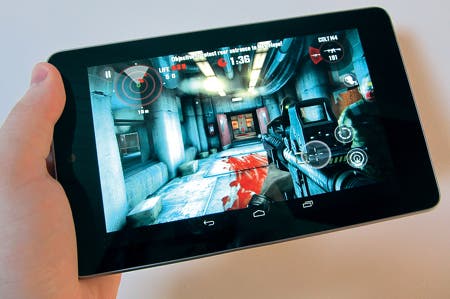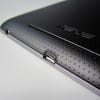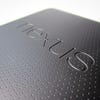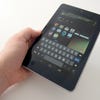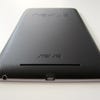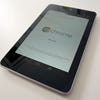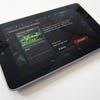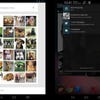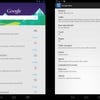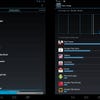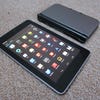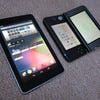Google Nexus 7 Review
Enter the Nexus.
"7-inch tablets are going to be dead on arrival," chimed an ebullient Steve Jobs back in October 2010. "7-inch tablets are tweeners: too big to compete with a smartphone and too small to compete with the iPad." We're not so uncouth as to suggest that Google will take any satisfaction from proving the late Apple CEO wrong, but the storm of hype, strong pre-orders and robust opening sales of the company's Nexus 7 - a 7-inch tablet, no less - appears to suggest that Steve wasn't entirely infallible when it comes to predicting the wants and needs of the general public.
It was always going to take something special to break the stranglehold that Apple and its iPad range currently has over the global tablet market. While previous Android efforts - including the Asus Transformer Prime and Motorola Xoom - have given it a decent stab, it has fallen to the Amazon Kindle Fire - a super-cheap 7-inch challenger which remains exclusive to North America at the time of writing - to take the biggest bite out of Apple's dominant market share. Google has decided to follow a similar route, not only with screen size, but with pricing. The Nexus 7 offers Tegra 3 graphics and an IPS screen for as little as £160 - an astonishingly low price when you consider that the Motorola Xoom launched at £500.
Despite Steve Jobs' protestations, that 7-inch form factor sure feels comfortable when you first pick up the Nexus 7. It's small enough to cradle in one hand, and tipping the scales at just 340 grams, this svelte tablet has none of the weight issues that have plagued many of its large-screen rivals. In fact, comparing it to a 10-inch tablet is doing the Nexus 7 a disservice; a more fitting comparison would be a Kindle eReader, which shares similar dimensions but offers only a fraction of the power and functionality of Google's new slate.
Design and Hardware
Considering that it was allegedly conceived and designed in the space of just four months, the Nexus 7 certainly feels like a device which has received a lot of care and thought. It has a clean and understated appearance, yet feels a million miles away from some of the other budget 7-inch tablets out there. The scratch-resistant Corning Gorilla glass front is surrounded by a silver trim (plastic, rather than metal), while the back is plastic with a grippy soft-touch finish which mimics the feel of leather.
The Nexus 7's screen has a resolution of 1280x800 pixels and uses LED-backlit IPS LCD technology. This ensures absolutely rock-solid viewing angles no matter how much you tilt the tablet, and also grants decent colour, brightness and contrast levels. IPS panels can't quite match Super AMOLED displays when it comes to sheer vibrancy, but they tend to present a more accurate representation of colour, and don't suffer from the tinting effects which impact some AMOLED screens. While the Nexus 7's screen doesn't match the eye-popping 2048x1536 resolution of Apple's third-generation iPad, the smaller size ensures this isn't a massive problem.
The fact that Asus and Google have managed to include NVIDIA's Tegra 3 chipset inside a tablet which costs less than £160 is quite an achievement; at this moment in time, this technology represents the pinnacle of mobile power. NVIDIA's chip effortlessly outstrips the performance of rival silicon, providing peerless power and cutting-edge graphical muscle. Despite the fact that the T30L variant of the Tegra 3 used in the Nexus 7 isn't the most potent variant - that status is reserved for the T33 version inside the Asus Transformer Pad Infinity - it nevertheless offers blistering results. The same version is used on the Asus Transformer Pad T300, and overall performance is almost identical between the two sibling devices.
Naturally, to get this product to market Asus and Google have had to cut corners, and the Nexus 7 is missing some features which hardcore Android users may regard as essential. The most obvious omission is the lack of a MicroSD card slot. This has actually been a common trait of Google's Nexus range since the release of the Samsung Nexus S in 2010, but the vast majority of Android devices on the market have expandable storage. It's worth bearing this in mind if you choose to purchase the cheaper 8GB (£159.99) variant of the tablet; once OS data and pre-installed apps are taken into account, you have less than 5.92GB of storage to play with.
If you intend to make full use of Google's cloud storage services, this might not present an issue; music, photos and movies can all be streamed to the Nexus 7 over a wireless connection. However, if you're looking to copy across your own content or download a multitude of apps and games, then it's certainly worth considering the additional cost of the 16GB (£199.99) model.
"In virtually all benchmarks, the Nexus 7 marginally inches ahead of the pricier Transformer TF300, though it loses out heavily in IO stats, suggesting it uses slower flash RAM."
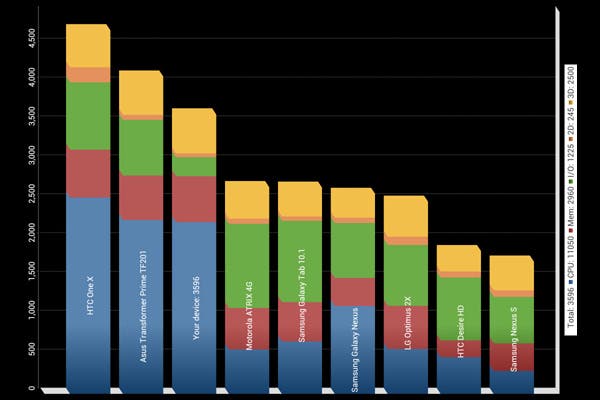
There's also no HDMI-out capability, which is a crying shame when you consider how good some of the Tegra-optimised games look on a large screen. The absence of a rear-facing camera is slightly easier to stomach; those lamenting this move should seriously ask themselves how many times they've actually used a tablet as a photographic tool. A front-facing snapper exists, mainly intended for video calls rather than taking family pictures.
Powered by Android 4.1 Jelly Bean
While the hardware is impressive, the Nexus 7 has another important selling point: it's the first device to ship with Android 4.1, the latest version of Google's OS. Codenamed Jelly Bean, this new software outwardly looks almost identical to its predecessor, Ice Cream Sandwich. The major changes are in the underlying code in the shape of Project Butter, and the introduction of Google's answer to Apple's Siri: Google Now.
Project Butter is an integral part of Google's drive to make Android slicker and more enjoyable. From day one, Android devices have suffered from stuttery performance and lag - an unfortunate side-effect of the sheer amount of work the OS is having to do with multitasking apps and background tasks. Project Butter solves this issue by placing additional load on the CPU whenever your finger touches the screen. Navigation and scrolling speeds are vastly improved, rivalling iOS in terms of smoothness. Apps also load faster, and switching between running programs is near-instantaneous. Naturally, some of this pace is down to the nippy Tegra 3 chipset, but having witnessed the difference between 4.0 and 4.1 on a Galaxy Nexus phone it's obvious that Google is making its code work efficiently than ever before. Many newcomers to Android will be oblivious to the vast difference this optimisation makes, but there's no doubt that Project Butter plays a significant role in making the Nexus 7 one of the most appealing Android tablets yet.
"Google's Project Butter initiative finally addresses the stuttering and lag that have plagued all previous revisions of the Android OS. It's still not perfect, but it's an obvious, noticeable boost to performance."
Google Now, on the other hand, is pure showmanship; a move by the Mountain View company to put its rival Apple well and truly in its shadow. It essentially replaces the standard search element of Android, and allows you to browse the web for all kinds of content - using either text or speech. For example, voicing the question "Show me pictures of cats" will bring up an entire page - correctly formatted as attractive thumbnails - of adorable moggies. "How old is Margaret Thatcher?" gives you her age in years, as well as her birth date - all spoken in perfect English by your voice-controlled assistant.
Google has clearly taken a long, hard look at Siri and copied across many core functions, but Google Now surpasses its famous competitor by some margin. Not only is it capable of finding answers to your questions more quickly, it manifests itself in other, near-ingenious ways. For example, if you have a meeting booked in your Google calendar which has an address attached to it, Google Now flashes up a card on the day of the appointment which shows the estimated journey time to that destination - it even warns you if traffic is looking heavy, allowing you time to seek out an alternative route.
Similarly, Google Now is able to monitor your web activity and searches to provide context-sensitive information; look up information on your local football team on a regular basis and Google Now will automatically provide cards which show the latest relevant scorelines. The more you use the web, the more Google Now learns about what kind of information you need at your fingertips. It could be viewed as slightly creepy in some ways, but after a few days spent in its company, you're almost certain to see it as a genuinely groundbreaking piece of programming rather than invasive snooping.
Tegra 3 Gaming
Given that the Nexus 7 has the same internal hardware as the Transformer Pad TF300, it's not unreasonable to expect the same gaming performance. For the most part, this is a perfectly valid assumption. The Nexus 7's smaller screen actually makes the tablet a more sensible device if portability is a prime concern; the resolution is actually the same as that of the TF300, so you don't lose any clarity or detail. Because you're able to hold the Nexus 7 in landscape mode without it causing undue strain on the arms, its potential as a mobile games console is enhanced.
"NVIDIA's TegraZone hosts some of the best-looking Android titles and despite running on a down-clocked Tegra 3, it's still significantly ahead of the majority of competing tablets."
No HDMI-out is a real pain, though. Given the hype currently being generated by the Ouya Android console, it's worth remembering that the same core tech exists inside the Nexus 7, and the ability to hook the tablet up to a TV would have essentially made the still-unproduced Ouya almost entirely redundant. The lack of full read and write USB host support has to go down as another negative. It means you can't plug in USB memory sticks or hard drives to augment the tablet's internal storage. Thankfully, there's still the opportunity to use USB peripherals - such as keyboards and gamepads - the latter of which will be of particular interest to gamers.
Battery life on the Nexus 7 is much better than expected, especially when you consider the ravenous power demands of the Tegra 3. The non-removeable 4325mAh cell is rated for around eight hours of "active" use according to Google, but a gentler usage pattern will see the tablet last for a couple of days before it needs charging. Speaking of which, it fills us with more pleasure than it possibly should do to confirm that the Nexus 7 charges over USB connection via a MicroUSB socket - there's not a proprietary charger in sight. This means that if you own a phone manufactured by anyone but Apple, you need only take a single standard charger with you when travelling away from home.
Google Nexus 7: The Digital Foundry Verdict
The Nexus 7 is an astonishing bargain. Tegra 3 technology in a compact and lightweight chassis for as little as £159.99 can only be described as representing superb value; add to that a sharp and colourful IPS screen and you have a scrumptious slice of electronics.
There are caveats to consider, though. The lack of expandable storage means you really have to get it right at the purchasing stage. Heavy users will undoubtedly find that the 8GB model just doesn't provide enough space for their needs. Because you can't add in more memory via a MicroSD card - or connect up a USB flash drive due to the lack of full USB "On-The-Go" support - you really have to be sure you can cope with the limited space if you choose to opt for the cheaper variant. The lack of HDMI-out is another disappointment, especially when you take into account the Tegra 3's graphical prowess.
"Despite some grumbles on the lack of expandability, the Google Nexus 7 offers a superb tablet experience for a bargain price - just be sure to get the 16GB model."
Still, it would take something much more dramatic to sully the spectacle of a quad core tablet for under £160. The Nexus 7 is a breakthrough in the tablet space, and early reports that the device is selling out as quickly as it can be restocked seem to hint that Google has struck gold this time around.
After struggling with the likes of the Motorola Xoom and the bodged launch of Android 3.0, the search giant finally seems to have gotten it right in this sector of the market. Now the gaze of the tech world must surely fall on Apple, which, if rumours are to be believed, is currently working on a smaller iPad for release this year. If true, we've got one hell of a battle on our hands. Round one, however, goes to Google and Asus.
